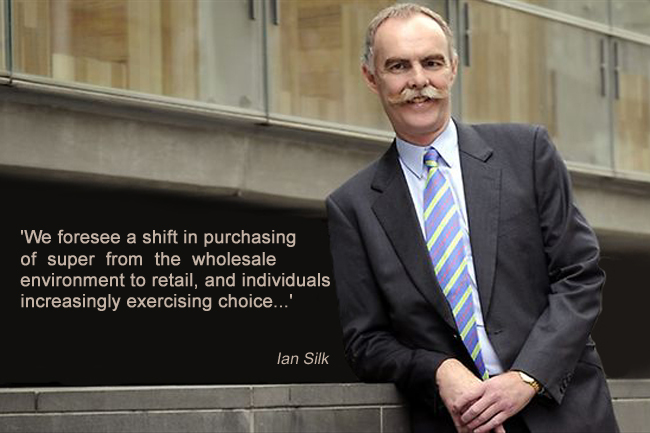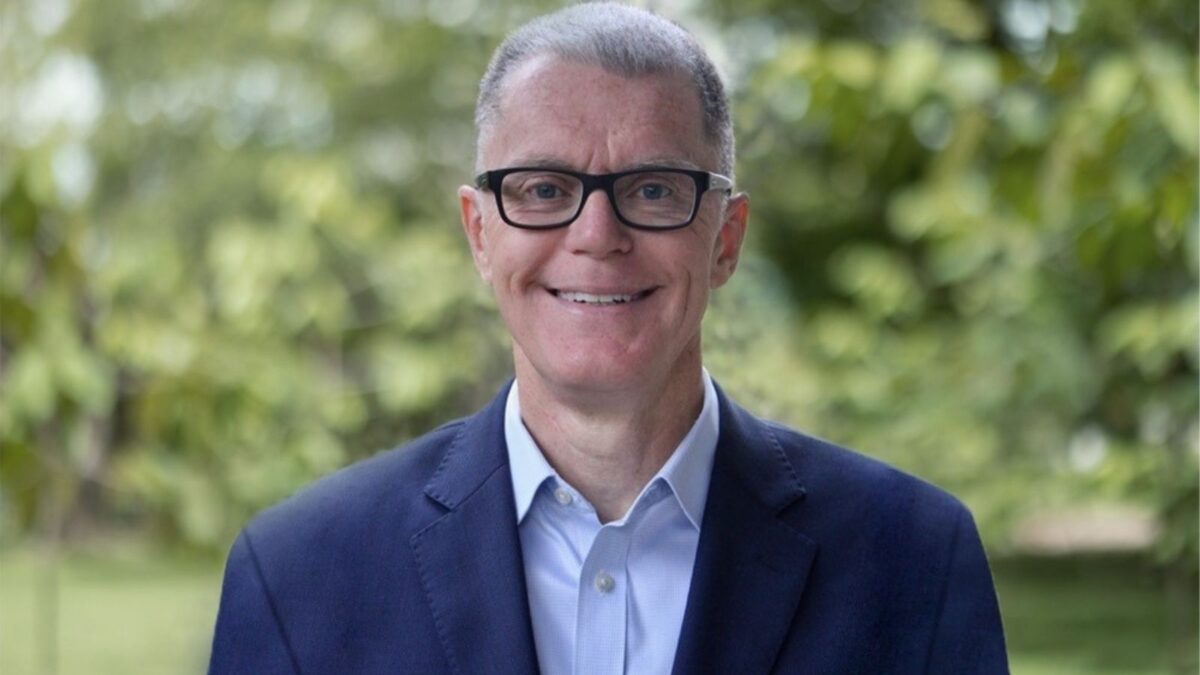AustralianSuper’s story: preparing for a retail super world
Ian Silk … ‘it’s important we don’t get seduced by size and position in the marketplace’
Belying its size, AustralianSuper, Australia’s largest superannuation fund, is continuing a history of innovation with its current program to insource the management of about 30 per cent of its investments. The fund has become a bellwether for others. Greg Bright spoke with its long-standing chief executive, Ian Silk, about the fund, its likely future and the wider industry in which it plays such a major part.
When the Australian Retirement Fund merged with the Superannuation Trust of Australia in 2006 there were a lot of sceptics about the wisdom of the move. Most mergers in the financial services world, and in other industries too, end up costing shareholders, one way or another. And size, with an investment portfolio, is usually a disadvantage rather than an advantage. Eight years later, the sceptics are now long gone.
Ian Silk, who was the chief executive of ARF, and Mark Delaney, who was the chief executive of STA, have presided over an amazing success story. The latest development, to do with insourcing a big chunk of the investment portfolio, is just a small part of the story.
A certain amount of insourcing has been going on for several years as funds grew their portfolios, but the announcement by AustralianSuper in 2012 that it aimed to insource up to 30 per cent over several years, expected this to amount to about $30 billion by the end of the program – implying a $100 billion fund – and that, if successful, the plan would save members between $150-200 million a year, really made the industry take notice.
The insourcing program is taking place at the same time that AustralianSuper led the way, starting early last year, with Member Directed Investment Options aimed at giving members with higher balances more control over the investments in their accounts. Other funds are also following suit with variations on the improved or new-style investment choices which are commonly operating outside the former, more restrictive, unit trust structures of old investment choice options.
Silk likes to focus on his fund’s services to members – both their range and quality – rather than the size of the fund.
“We have to be genuinely concerned about acting in the best interests of members,” he says. “As we and every other fund get larger and ostensibly more successful there’s a risk we could lose a bit of our rigour. It’s important we don’t get seduced by size and position in the marketplace.”
Assets growth is not one of the management targets for the fund. It is a forecast. Last year’s 40 per cent growth was unusual with strong market performance for investments and the completion of mergers with AGEST and the IBM super fund. The “hard targets” for management have to do with service quality and net investment performance. With membership, the metric used by management is not the aggregate but rather the number of active members as a proportion of the workforce.
Commentators have often referred to the big public offer funds as “the new mutuals” but such a term is not necessarily a compliment, as most of the old mutuals had to corporatize to lift their game in a more competitive world.
“We have to be conscious that we don’t suffer the same fate as AMP”, Silk says. “I’m not talking about the AMP of today, which I think is a pretty good organisation. I’m talking about how it was before it de-mutualised where it seemed to be captured by forces not focussed on their policy holders – with management at the front of the queue.”
The aim under the investment insourcing program is to save money on management fees and charges but not at the cost of investment performance. Silk points out that industry funds have successfully reduced or at least kept down the costs of administration – perhaps too much, he says – but have not done the same with investment costs.
AustralianSuper moved to its current admin fee of $1.50 per member per week in 2009. It charges only $180 a year for the member directed option’s admin, plus transaction costs for trades.
Silk says: “As part of our missionary zeal, I think we may have been too smart by half with the administrators. You now have the situation where they are all struggling to make money and re-invest in their systems.”
However, costs associated with investments have proved more stubborn, partly because of the early adoption by industry funds of higher fee-charging categories such as private equity, infrastructure and hedge funds.
Silk says: “Deloitte predicted that by 2033 the superannuation industry will have about $3.3 trillion in assets (in 2013 dollars). What confidence do you have that [funds management] costs will have come down by then?”
He suggests several reasons why manager fees remain high: a lot of funds do not have the will to take up the fight; that, due to supply and demand – “the tsunami of money from the SG” – funds have not been as disciplined as they could be; good managers can, and do, say their fees are justified, even though those which consistently add value are few and far between.
He could have added “capacity”. A lot of international managers, who are protective of available capacity in some of their funds, such as emerging markets or higher-alpha funds, believe pension funds and other investors in the rest of the region or in Europe, as well as other classes of investors such as family offices, are prepared to pay higher fees, so they get the capacity.
“I had always envisaged that we’d have a hybrid model [insourced and outsourced investments],” Silk says. “There are so many clever people in the funds management industry we want to be able to continue to tap into that. I know there will be challenges. Will we be able to attract and retain good people?”
Certainly, many funds managers and others have expressed their scepticism about AustralianSuper having the same discipline in hiring and firing internal managers as it has shown with its external ones.
Silk responds: “There’s $150-200 million [per year] on the table. The size of the prize is so big that management has to be prepared to act appropriately. Otherwise we’re not doing our jobs.”
Going back to pre ARF/STA merger days, a lot of the staff of the respective funds did not have financial services experience. That is not the case with most big funds any more. Silk says that the two main filters AustralianSuper uses for new recruits are: “whether they are an AustralianSuper sort of person, and whether they can do the job”. A core of the new internal team so far recruited has come from Equity Trustees, which Silk describes as having a similar, customer-first culture.
As part of their research, Silk and Mark Delaney visited and spoke with quite a few funds overseas which had been down the insourcing path, to get an idea of all the possible pitfalls. One risk was a little surprising. While visiting the Harvard Endowment Fund they were warned about possible disquiet when remuneration got too far out of whack with the organization’s norms.
“We were told that Harvard had recently paid one of its star portfolio managers a $5 million bonus”, Silk recalls. “When it became public there was a huge demonstration and the academics marched on the Endowment Fund’s building which is on the campus. I said to Mark: “If that’s what Harvard academics do, God knows what our members would do!”
AustralianSuper spends a lot of time trying to improve its communication with members. This is particularly the case given the continued growth of SMSFs and the leakage of some high-balance members.
“The proponents of SMSFs are very good at extolling the virtues of ‘control’,” Silk says. “In almost every focus group we do someone mentions the word. How do we effectively communicate that we can offer the same thing for most people. We don’t want the whole field, but for most people we can find a solution within the fund…
“The last data I saw about SMSFs, they had more than 60 per cent of their assets in direct shares, cash and term deposits. You can do that in Australian Super for a couple of hundred dollars.”
Similarly, AustralianSuper seeks to communicate with retirees and present the case for annuities and other retirement products.
“According to our research, most people who cash out have relatively modest sums,” Silk says. “We seek to explain to them that they have the choice to put some of their money into an income stream, which might be quite material as a supplement to the old-age pension… I think the super system is in transition and an answer [to retirement incomes] will emerge.”
The fund’s financial support for the daily general newsletter and website, ‘The New Daily’, is part of the effort to improve member communications, as well as possibly providing some ancillary benefits. AustralianSuper, Cbus and Industry Super Holdings have provided seed funding for the media product, which is scheduled to have its formal launch in February. The media product has been available, however, since November. The spend is from the marketing budget and not an investment. The participating funds are able to send their members a daily email with the news service, ranging from a simple “with compliments” to other more important or personalized messages in future.
Silk says: “We see ‘New Daily’ within a broader context. We foresee a shift in purchasing of super from the wholesale environment to retail, and individuals increasingly exercising choice. “At some stage we can see that an employer will be required to say to a new employee: “tell us your super fund” and the employee not being able to start until they’ve nominated a fund, much as happens with a bank account for salary payments. It’s not a desired outcome unless people are making an informed judgement, but we think it’s the direction that the regulatory environment is ultimately heading.”
The news website may help expand the funds’ distribution system, especially given the widespread doubts about the future viability of mainstream newspapers and their websites in a digital age.










